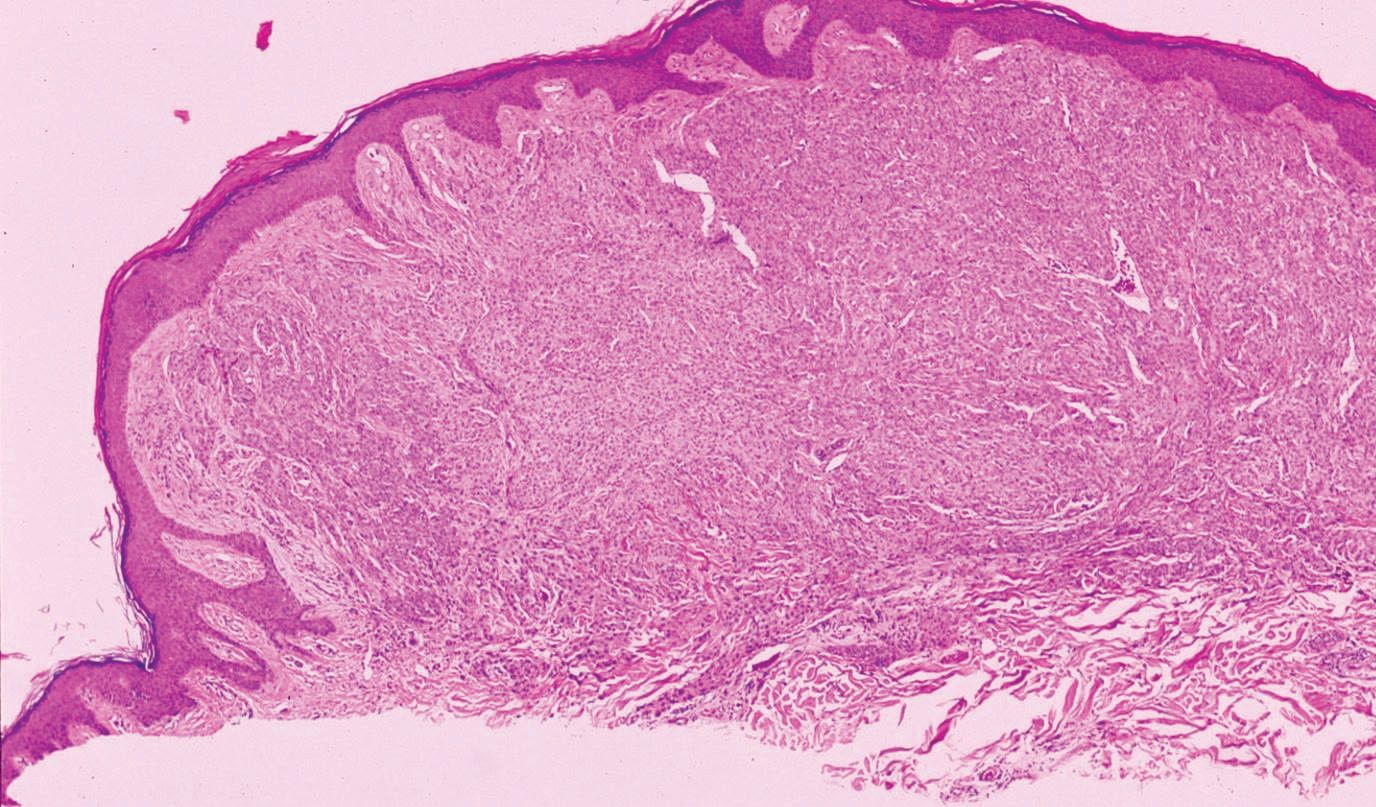- Case-Based Roundtable
- General Dermatology
- Eczema
- Chronic Hand Eczema
- Alopecia
- Aesthetics
- Vitiligo
- COVID-19
- Actinic Keratosis
- Precision Medicine and Biologics
- Rare Disease
- Wound Care
- Rosacea
- Psoriasis
- Psoriatic Arthritis
- Atopic Dermatitis
- Melasma
- NP and PA
- Skin Cancer
- Hidradenitis Suppurativa
- Drug Watch
- Pigmentary Disorders
- Acne
- Pediatric Dermatology
- Practice Management
- Prurigo Nodularis
- Buy-and-Bill
Publication
Article
Dermatology Times
Technology improves histologic diagnosis in melanoma
Author(s):
Malignant melanoma can mimic many melanocytic lesions and vice versa, making it a difficult diagnosis. As such, accurate diagnosis should be a collaborative effort between clinician and dermatopathologist, says this expert.
This non-descript lesion on the sun-damaged skin of an older male patient proved to be an amelanotic desmoplastic melanoma on biopsy. (Photo: Clay J. Cockerell, M.D.)

Dr. Cockerell

Malignant melanoma can present with characteristics that mimic other lesions clinically and histologically. As such, accurate diagnosis should be a collaborative effort between clinician and dermatopathologist, advises Clay J. Cockerell, M.D., founder and medical director of Cockerell Dermatopathology, Dallas.
Clinicians and dermatopathologists should interact in a way that is rational, intelligent and direct to get a quicker and more accurate diagnoses for the patient, Dr. Cockerell told colleagues recently during a talk at the Practical Symposium in Beaver Creek, Colorado.
RELATED: Melanoma management perspectives vary
“Unfortunately, a lot of times we receive superficial or narrow biopsies that do not sample diagnostic areas. This can make arriving at the correct diagnosis even more difficult, particularly in the absence of adequate detailed clinical information regarding the lesion and patient,” says Dr. Cockerell
In addition to the biopsy specimen, not all clinicians will submit sufficient clinical information, a practice that often significantly assists the dermatopathologist and improves the chances of arriving at the accurate diagnosis when faced with a challenging lesion.
It is crucial that the pathologist know what the clinician is truly thinking regarding the potential diagnosis of the suspect lesion, according to Dr. Cockerell.
“A picture can speak a thousand words, and if there is any question about the lesion at all, we encourage clinicians to submit a clinical image as well, as this can be extremely helpful for pathologists to arrive at a more precise diagnosis in a more timely and cost-efficient manner,” Dr. Cockerell says.
RELATED: Head and neck melanoma characteristics
Other methods that can help dermatopathologists increase diagnosis accuracy of the specimen material include new gene expression profiling technologies and fluorescence in situ hybridization.
“Both of these state-of-the-art techniques can be very useful in challenging lesions and may sometimes be the deciding factor when the pathologic diagnosis is not straightforward,” Dr. Cockerell says. “They don’t always solve the problem but they can provide valuable information that can be used in the diagnostic algorithm when evaluating the lesion in question.”






